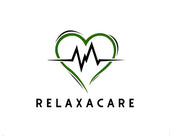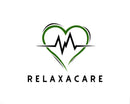Post-Massage Soreness: Why It Happens and What To Do About It
People often get massages to help them manage sore or stiff muscles. When people leave a massage only to discover that they’re sore, they may feel cheated and perplexed. They may ask themselves whether the massage has worked, or if the massage made their initial soreness worse. However, post-massage soreness does have an explanation. Read on to learn why it happens and what to do about it.
What Is Post-Massage Soreness?
Symptoms
Post-massage soreness can set in immediately after a massage, but it often begins the following day. It usually lasts for a few hours, but it can continue up to a few days after your massage. Those prone to soreness after a massage tend to experience:
- Muscle aches
- Inflammation or swelling
- Fatigue
- Nausea or headaches
If you experience these symptoms following a massage, don’t be alarmed. Typically, they will go away on their own, though there are strategies you can use to help mitigate them. These methods will be addressed in a later section.
Why Symptoms Occur
Muscle Soreness
To understand why post-massage soreness occurs, we should consider delayed onset soreness. This describes pain that occurs in the hours after you work out, and it is a phenomenon with which many people are familiar. During a workout, you stretch and manipulate your muscles in ways outside of the usual, which can lead to pain later. The same is true during a massage. Because the muscles are being worked and pulled during the massage, they may feel sore.
Inflammation
Massages are known to stimulate blood flow to different parts of the body, which is excellent for those experiencing circulation issues. However, if a section of muscle receives too much attention, it can cause an excess of blood flow to these areas, leading to swelling or inflammation. This is not a cause for alarm and typically goes away on its own.
Headaches and Nausea
During a massage, the increase of circulation in the body doesn’t only enhance blood flow to other areas. It also helps to remove toxins and metabolic waste from the body. The process of flushing waste requires more water, and if the body doesn’t have enough, you may experience headaches or nausea. This is also natural and doesn’t mitigate the benefits of a massage.
Massages Most Likely To Make You Sore
You probably will not experience soreness after every massage you receive. A light massage, such as a Swedish massage, is unlikely to make you sore. More intense massages, such as deep tissue or sports massages, are more likely to cause post-massage soreness.
How Much Pain Is Too Much Pain?
It’s true that many people experience soreness after a massage, and this is natural. But you don’t have to be in pain for a massage to be effective. You may experience some discomfort during a deep tissue massage. However, if you are actively in pain during a massage, you likely won’t experience many benefits. Too much pressure on the muscles tends to cause greater tension and pain.
The same is true for post-massage pain. You can expect your muscles to be tender when prodded after a massage. But if you find that you are in more pain than you were before the massage, then it’s possible your muscles were worked too hard during the session.
Strategies for Managing Post-Massage Soreness
Before Massage
Drink Water
As mentioned, your body requires more water to flush away toxins. If you are about to have a long session in the massage chair or go to a parlor, be sure to drink plenty of water in advance. This will help you avoid soreness after the session.
Avoid Drinking Alcohol
Alcohol is associated with relaxation, making it seem like the perfect thing to add to a massage experience. However, drinking alcohol can dehydrate you. Since your body is already using more water to flush its toxins, drinking alcohol may amplify the effects of dehydration and lead to a bad hangover.
After Massage
Drink More Water
Your body continues the process of flushing toxins after the massage is over, which is why soreness takes a few hours to set in. You should continue to drink more water after your massage to help this process along.
Rest
One of the worst ways to reverse all the relaxing benefits of a massage is to immediately perform physical labor once it’s over. If you are going to sink into a massage chair, the best time to do it is in the evening, when you aren’t planning on doing much afterward. This will give your muscles a chance to rest later. And if you’re experiencing headaches and nausea post-massage, resting is the best way to deal with them.
Stretch
Immediately following a massage, our muscles may tighten up, leading to worse muscle aches. Doing some gentle stretching after a massage will help keep these muscles loose and limber. Stretching also improves circulation, which can help reduce inflammation. But remember, rest is still key. Try to keep your stretches simple.
Bathe
Another way to keep these muscles from tightening up is to introduce them to heat. A warm bath is a perfect way to do this. You can increase a bath’s benefits by adding Epsom salts and essential oils. Many people believe Epsom salts can reduce inflammation and help the body secrete harmful toxins. Essential oils may help reduce pain, and if you use soothing scents such as peppermint or lavender, they can help your mind relax, too.
Schedule Massages Regularly
If you work out after being inactive for months, you are far more likely to be sore than if you were working out regularly. The same is true of massages. If you receive massages regularly, the muscles will become used to the movements. One of the key benefits of our luxury massage chairs is the fact that you can receive regular massages without having to work around your schedule and that of the massage parlor’s.
Massage is a wonderful practice loaded with health benefits. Knowing why post-massage soreness happens and what to do about it will help make your massage experience even better.





Leave a comment